Web Rendering Techniques: CSR, SSR & SSG
Client Side Rendering CSR, Server Side Rendering SSR and Static Site Generation SSG are the techniques which are used to render web pages on the browser.
Client Side Rendering (CSR)
- When a user requests a page, the browser downloads a minimal HTML file and a JavaScript bundle.
- The responsibility for rendering web pages is handed over to the browser's
JavaScript engine. - API calls are made directly from the user's browser, and page updates.
- All processing like rendering and data manipulation, occurs on the client side, utilizing the user's device resources, such as the CPU.
- Initial page loading speed may be slower compared to other rendering approaches.

Server Side Rendering (SSR)
- When a user requests a page, the server dynamically generates the HTML content for that specific request and sends it to the client.
- SSR improves the initial performance of a website, as the server sends pre rendered HTML content to the client, reducing the need for additional client side processing.
- SSR is beneficial for SEO optimization, as search engines receive fully rendered HTML content.
- It does increase server load, as the server needs to generate HTML dynamically for each request,

Static Site Generation (SSG)
- During the build process all pages are pre-rendered and the generated HTML pages are stored on the server.
- When a user requests a page, the server serves the pre rendered HTML page, resulting in fast and efficient page loads.
- SSG is well suited for content heavy websites where the content does not change dynamically or in real-time. It is not suitable for highly dynamic and websites which requires real time updates.

How to choose accurate rendering techniques
-
CSR: for client heavy and dynamic application
-
SSR: where SEO is priority
-
SSG: where web pages are less dynamic